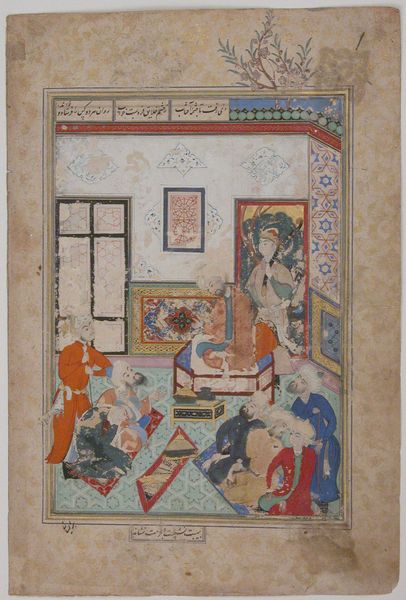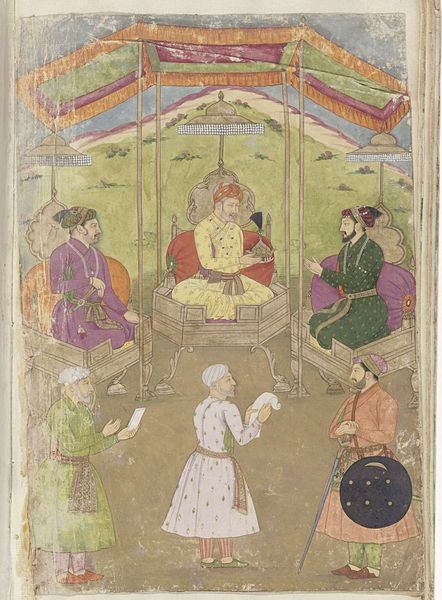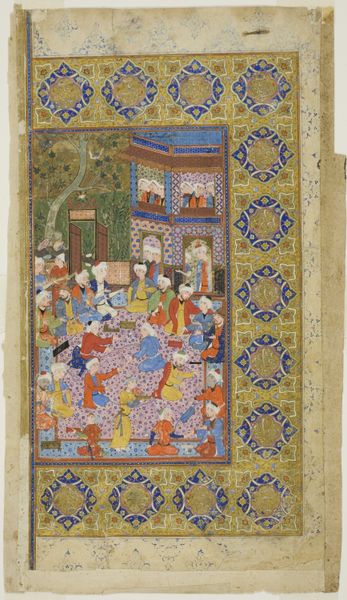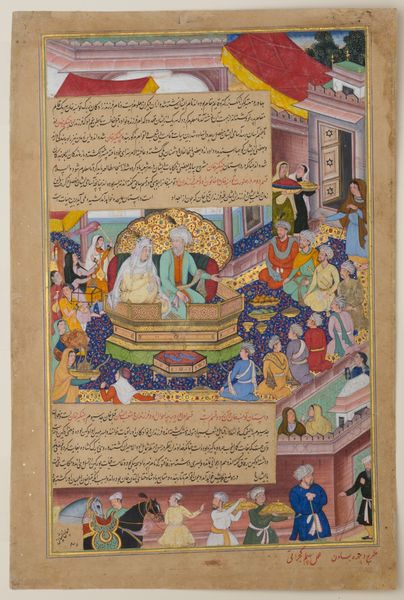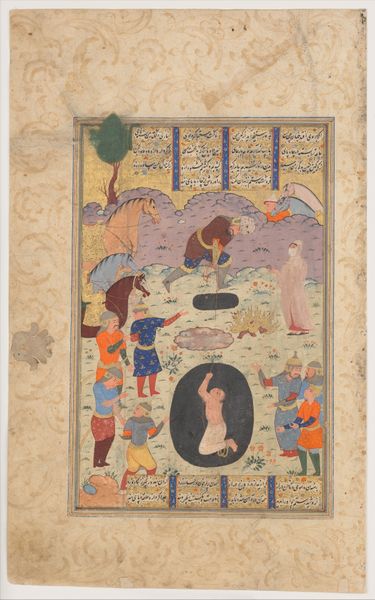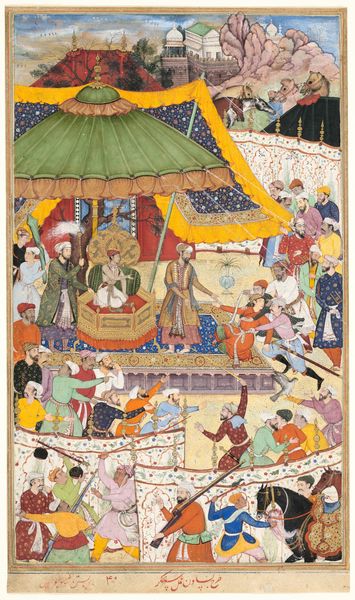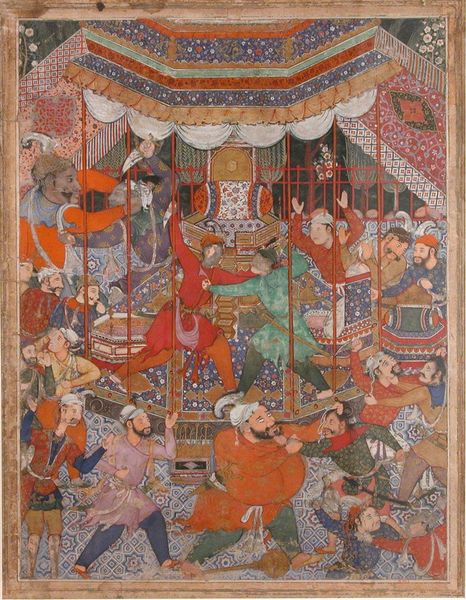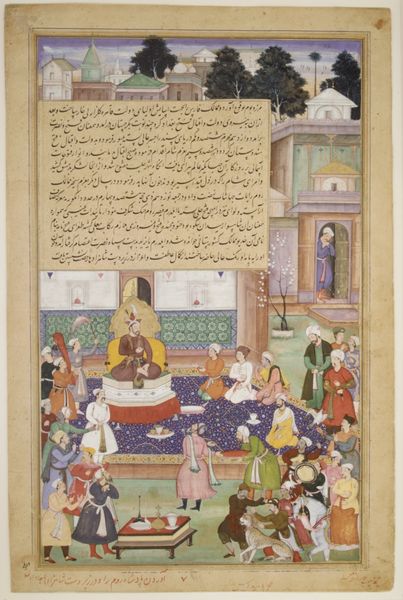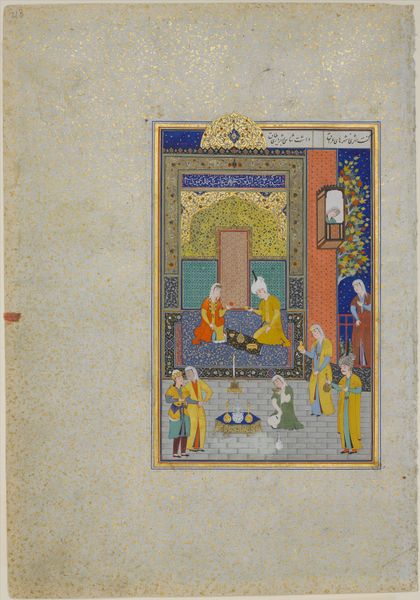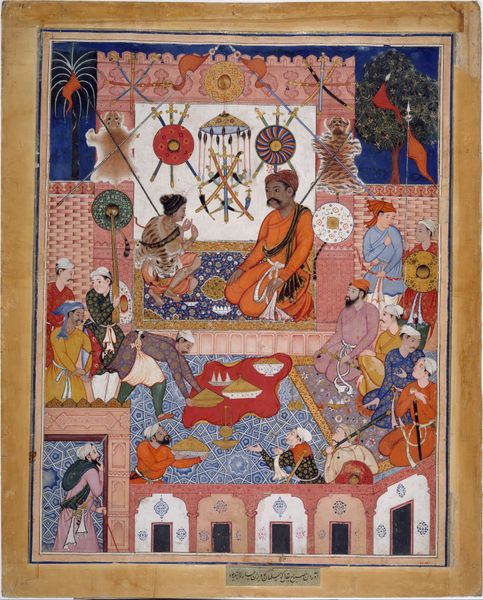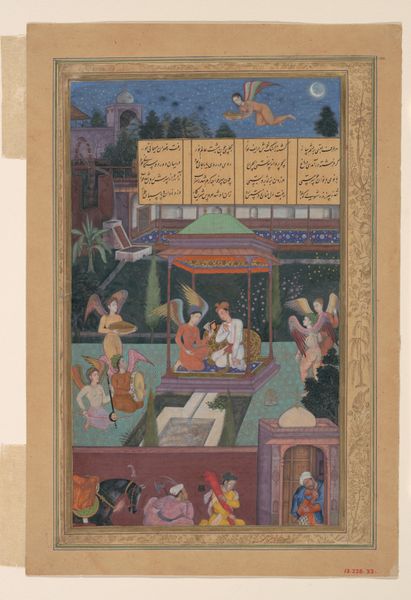
watercolor
#
portrait
#
water colours
#
landscape
#
watercolor
#
islamic-art
#
miniature
Dimensions: Page: H. 16 1/4 in. (41.3 cm) W. 12 13/16 in. (32.5cm) Mat: H. 22 in. (55.9 cm) W. 16 in. (40.6 cm)
Copyright: Public Domain
Curator: Welcome. We’re looking at "The House of Bijapur," attributed to Kamal Muhammad, crafted sometime between 1655 and 1705. It’s a watercolour painting and what strikes me most is the multi-layered composition of this miniature artwork. Editor: Immediately I’m struck by the unusual use of colour. The soft lilacs of the landscape are almost dreamlike, aren’t they? There's a calm theatricality about it; as though the characters are acting out an old story on a gently surreal stage. Curator: The painting’s divided into registers. There is the upper landscape; a middle area in which members of the court are arranged; and finally the lower register. This construction creates an almost architectural division. The work deploys this use of hierarchical perspective characteristic of many Mughal paintings of the time. Editor: I find the characters rather fascinating; particularly how they’re distributed across the space and rendered in such expressive detail. The artist seems to have invested them all with distinct personalities and roles; although some relationships seem enigmatic and unreadable from our standpoint. It's like a little, meticulously painted puzzle box of personalities! Curator: True. And note how the formal arrangement gives each person specific attention and dignity despite its hierarchical structure. The architectural and landscape backdrop seems more a matter of compositional framing and symbolic power than strict reality, lending to a layered reading that combines formal authority with moments of artistic invention. Editor: Absolutely. You get the feeling, don't you, that even though it depicts a regal tableau there's something wonderfully delicate in its execution? As though a secret is being carefully shared by the artist directly to you. That intimacy is lovely. Curator: That’s perceptively put. When we reflect on Kamal Muhammad's “The House of Bijapur”, it shows us an artist attuned to the complexities of colour and pictorial space, capable of transforming a potentially straightforward scene into something both dignified and delightfully unusual. Editor: A journey through delicate surfaces, it hints at complex meanings but delivers with that singular touch of magic of another world—one which rewards the patient eye. A precious dream in watercolour, isn't it?
Comments
No comments
Be the first to comment and join the conversation on the ultimate creative platform.
